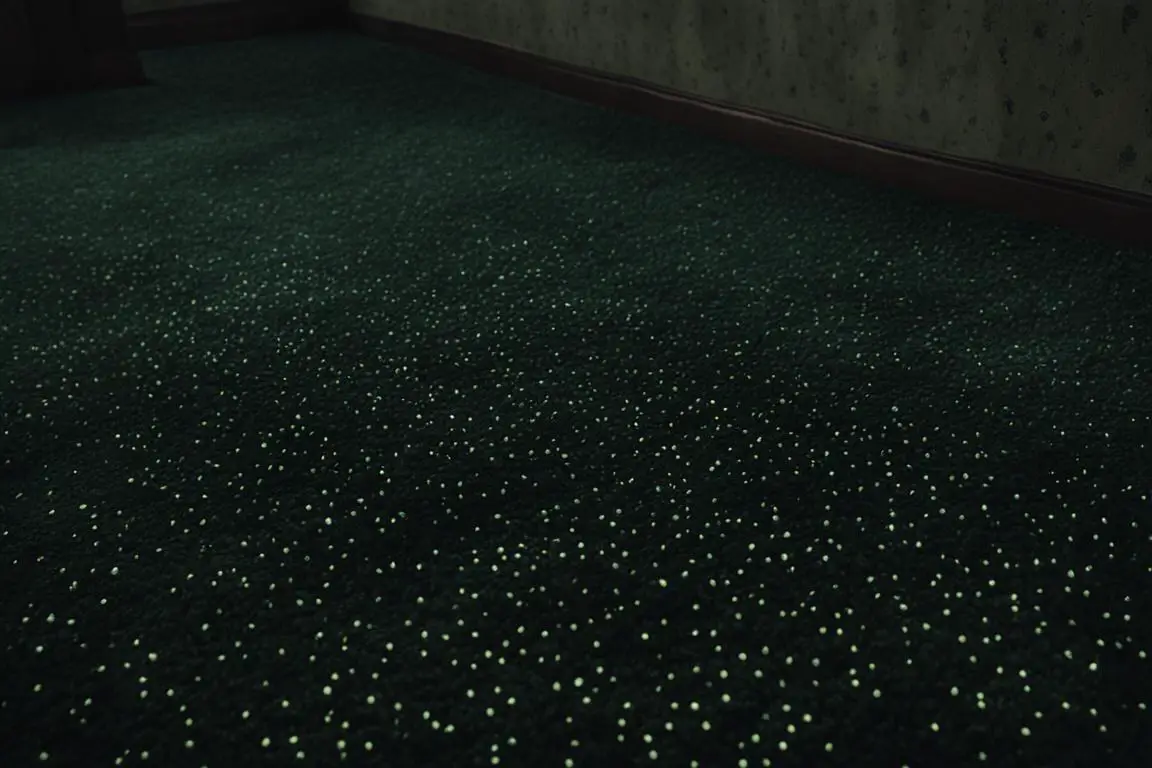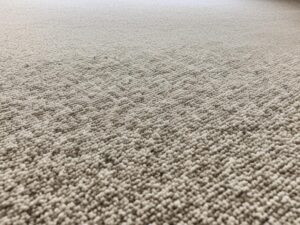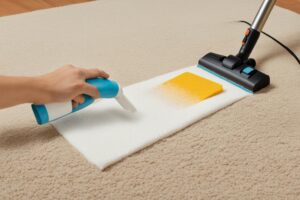Mold can quickly grow in carpet, posing health risks and damage to your home. Being able to detect mold in your carpet is crucial for maintaining a safe and healthy environment. In this guide, we will explore the signs of mold in carpet and the steps to effectively detect and address the issue.
Key Takeaways:
- Learning how to detect mold in carpet is important for maintaining a safe and healthy environment in your home.
- Visual inspection, musty odor, and discoloration are common signs of mold growth in carpet.
- Using mold testing kits can provide confirmation of mold presence in your carpet.
- Thorough inspection, checking underneath the carpet, and professional assistance are steps to effectively detect mold in carpet.
- Preventing carpet mold includes sensible installation, high-quality padding, regular cleaning, and professional testing.
Health Risks of Mold in Carpet
Mold in carpet can pose significant health risks, particularly in regard to allergies and respiratory illnesses. Exposure to carpet mold can lead to various health issues, affecting individuals of all ages.
Allergies: Mold spores can trigger allergic reactions in susceptible individuals, causing symptoms such as sneezing, itching, nasal congestion, and watery eyes. Those with existing allergies may experience exacerbation of symptoms when exposed to mold in carpet.
Respiratory Illnesses: Prolonged exposure to mold in carpet can result in respiratory problems, including coughing, wheezing, chest tightness, and shortness of breath. Individuals with asthma or other respiratory conditions are particularly susceptible to these effects.
Mold Exposure in Children: Children are more vulnerable to the health risks of carpet mold due to their developing immune systems. Mold exposure can lead to respiratory infections and other health issues, impacting their overall well-being.
Dangers of Carpet Mold: The presence of mold in carpet can lead to the release of mycotoxins, which can negatively affect indoor air quality and pose additional health risks. These toxins can cause irritation, inflammation, and even more severe health conditions, such as lung infections.
To gain a better understanding of the health risks associated with mold in carpet, it is crucial to consider the potential impact on allergy sufferers, respiratory health, children, and the dangers that mycotoxins pose. Taking steps to prevent and address carpet mold is essential for maintaining a healthy living environment.
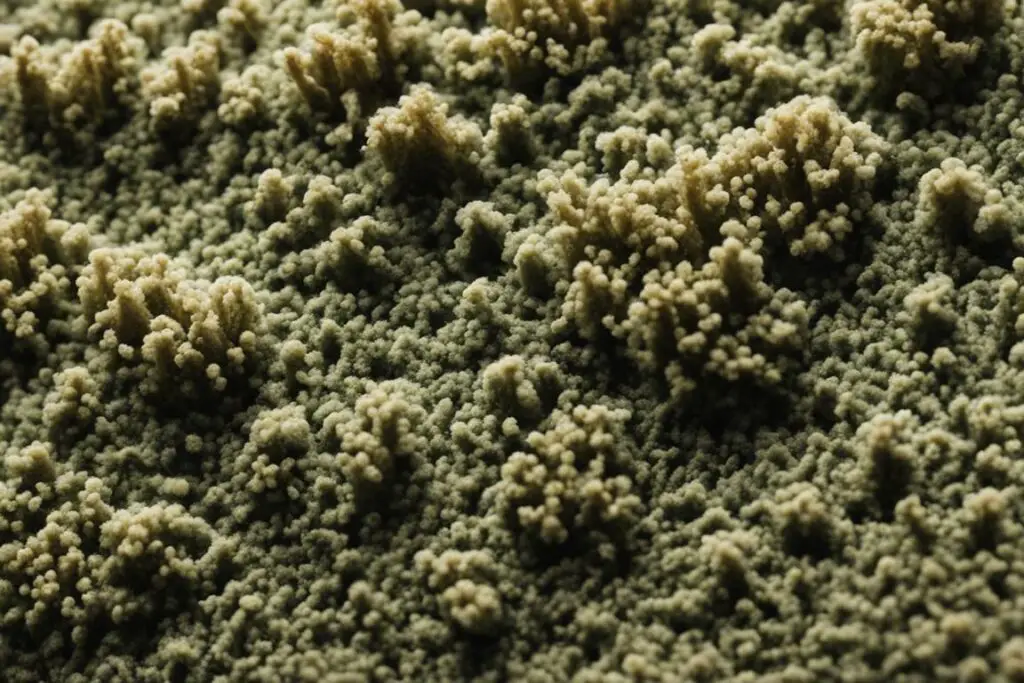
Health Risks of Mold in Carpet
| Health Risks | Effects |
|---|---|
| Allergies | Allergic reactions, sneezing, itching, nasal congestion, watery eyes |
| Respiratory Illnesses | Coughing, wheezing, chest tightness, shortness of breath |
| Mold Exposure in Children | Respiratory infections, impact on overall well-being |
| Dangers of Carpet Mold | Release of mycotoxins, poor indoor air quality, lung infections |
Signs of Mold in Carpet
When it comes to detecting mold in carpet, there are several signs that you should look out for. These signs can help you identify whether mold is present and take the necessary steps to address the issue. Here are some key indicators:
- Visual Inspection: One of the most obvious signs of mold in carpet is discoloration. Keep an eye out for green, white, or black spots on your carpet. These patches can indicate mold growth.
- Musty Odor: Another telltale sign of mold in carpet is a musty or damp smell. If you notice an unpleasant odor, it could indicate the presence of mold.
- Mold Testing Kits: To confirm the presence of mold in your carpet, you can use mold testing kits. These kits contain easy-to-use tools that allow you to collect samples from your carpet and send them for analysis. This can provide you with concrete evidence of mold presence.
By conducting a visual inspection, paying attention to musty odors, and utilizing mold testing kits, you can effectively detect and confirm the presence of mold in your carpet. Identifying the signs early on is crucial for taking timely action and preventing further mold growth.
To provide a visual representation, here is a table summarizing the signs of mold in carpet:
| Signs of Mold in Carpet | Description |
|---|---|
| Discoloration | Green, white, or black spots on the carpet |
| Musty Odor | Unpleasant damp smell |
| Mold Testing Kits | Easy-to-use kits for collecting samples and confirming mold presence |

Having a clear understanding of the signs of mold in carpet empowers you to take proactive measures and protect your home from potential health risks. If you notice any of these signs, it is crucial to address the issue promptly through professional mold remediation.
Steps to Detect Mold in Carpet
To effectively detect mold in your carpet, follow these steps:
- Thorough Inspection: Start by conducting a comprehensive examination of your carpet. Look for any visible signs of mold, such as discoloration or unusual spots. Pay close attention to areas that may have been exposed to moisture.
- Checking Underneath Carpet: Lift up the corners or edges of the carpet to inspect the underlying padding and subfloor. Mold can often grow beneath the surface, so it’s important to check underneath for any signs of mold growth.
- Odor Inspection: Mold often produces a musty odor. Take a deep breath and see if you can detect any unusual smells coming from your carpet. If you notice a persistent, unpleasant smell, it could be an indication of mold.
- Professional Assistance: If you are unsure about the presence of mold or if you want to ensure accurate detection, consider seeking professional assistance. A mold remediation specialist can perform a thorough inspection using specialized tools and techniques to identify any hidden mold in your carpet.
By following these steps and being proactive in detecting mold in your carpet, you can take the necessary measures to address the issue and maintain a healthy living environment.
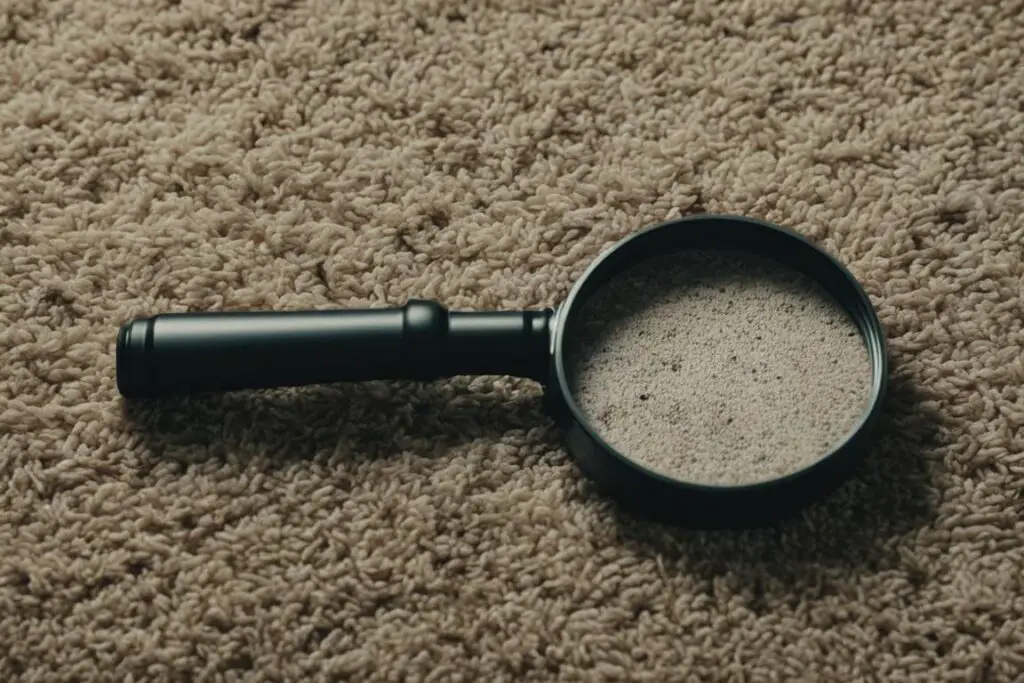
Preventing and Addressing Carpet Mold
Mold in carpet can pose significant health risks and cause damage to your home. By taking preventive measures and addressing mold growth promptly, you can maintain a clean and healthy environment. Here are some essential steps to prevent and address carpet mold:
Sensible Carpet Installation
When installing carpet in areas prone to moisture, such as bathrooms and basements, it is crucial to follow sensible installation practices. Ensure that the subfloor is dry and free from any water leaks or excessive humidity. Use moisture-resistant padding and consider using a vapor barrier to prevent moisture from seeping into the carpet.
High-Quality Padding
Using high-quality padding under your carpet can provide an added layer of protection against mold growth. Quality padding keeps the carpet lifted off the subfloor, allowing for better airflow and reducing the chances of moisture accumulation. It also helps absorb spills and prevents them from seeping into the carpet fibers.
Regular Carpet Cleaning
Maintaining a regular carpet cleaning routine is essential for preventing mold growth. Vacuum your carpet at least once a week to remove dirt, dust, and potential mold spores. Consider using a vacuum cleaner with a HEPA filter for more efficient allergen removal. Additionally, professional deep cleaning should be performed at least once or twice a year to eliminate deep-seated dirt and mold-causing substances.
Professional Testing
Regular professional mold testing is recommended to ensure the early detection of mold growth in your carpet. Professional testers have the expertise and equipment to accurately assess the presence and extent of mold infestation. Prompt testing enables you to take appropriate remediation measures, preventing further damage to your carpet and the potential health risks associated with mold exposure.
By following these preventive measures and being vigilant about addressing any signs of mold growth, you can ensure a healthier and mold-free carpet environment for you and your family.
Conclusion
Detecting mold in your carpet is crucial for maintaining a healthy and safe home environment. By being aware of the signs and following the steps outlined in this guide, you can promptly address any mold issues in your carpet.
If you suspect mold in your carpet, it is highly recommended to seek professional assistance for accurate testing and remediation. Professionals have the expertise and equipment to identify the extent of the mold problem and provide effective solutions.
Remember, maintaining a healthy home goes beyond just addressing carpet mold. Regular cleaning, proper ventilation, and minimizing moisture in your home are all important factors. Taking proactive measures, such as sensible carpet installation, using high-quality padding, and regular deep cleaning, can help prevent mold growth and ensure a mold-free carpet.
By prioritizing the detection and addressing of carpet mold, you can create a healthier living environment for you and your family. Don’t hesitate to reach out to professionals for assistance and maintain a clean and mold-free home.
FAQ
How can I detect mold in carpet?
There are several signs that indicate the presence of mold in carpet. Visual inspection can reveal discoloration, such as green, white, or black spots. A musty odor is another common indicator of mold growth. Mold testing kits can also be used to confirm the presence of mold in your carpet.
What are the health risks of mold in carpet?
Mold in carpet can cause a range of health problems, including allergies, respiratory diseases, and even lung infections. Children and individuals with weakened immune systems are particularly vulnerable to the effects of mold exposure.
How do I recognize the signs of mold in carpet?
The signs of mold in carpet include visual inspection, which can reveal discoloration such as green, white, or black spots. A musty odor is another indicator of mold growth. Mold testing kits can also be used to confirm the presence of mold.
What steps can I take to detect mold in my carpet?
To effectively detect mold in your carpet, you should conduct a thorough inspection, including checking underneath for any signs of mold. Pay attention to any musty odors and consider using professional assistance for accurate detection and testing.
How can I prevent carpet mold?
Preventing carpet mold can be achieved through sensible carpet installation in areas prone to moisture, using high-quality padding, and regular carpet cleaning. Professional mold testing can also provide accurate results and guide appropriate remediation steps.
